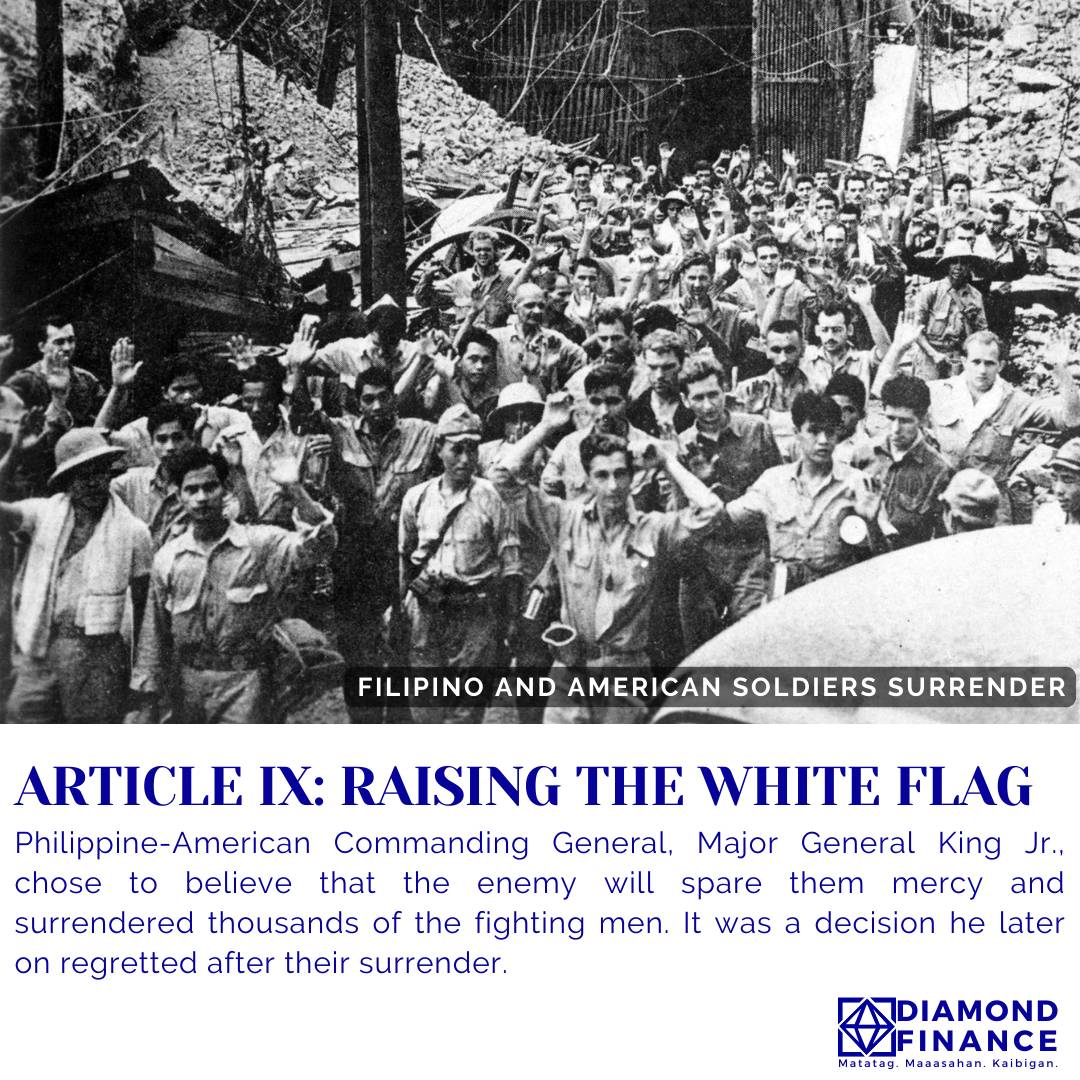The troops did not notice that months had passed and still the battle continued. Despite being overwhelmed by the invader’s forces, being outnumbered and outgunned, they were still able to annihilate one Japanese Army. These Filipino soldiers, with the members of PMA Classes 1942 and 1943 in the frontline, alongside with the American troops, were able to keep the enemy at bay for months and had robbed the Japanese of an easy victory.
On April 3rd, 1942, fresh Japanese troops were deployed to renew their offensive supported by heavily artillery, tanks and aerial attacks. The Filipino-American troops, who were starving, poorly-equipped and ravaged by illness fought back as best as they could but were no match to the Japanese reinforcements. When General MacArthur heard the news, he ordered a general counterattack on the enemy with no concern for the fighting men who were famished and severely weakened by wounds from the battle. However, the Philippine-American Commanding General of the soldiers, Major General Edward P. King Jr., ignored this order. Without the consent nor consultation from Lt. General Jonathan Wainright, the Senior Field Commander, the former decided to surrender on April 9, 1942. Major General King Jr. chose to believe that the enemy will spare them mercy rather than seeing more of these hungry and diseased men slaughtered by the enemy if they continued to fight.
This was a decision he later on regretted after their surrender. Frustrated by their massive casualties and disappointment over dreams of easy victory, Japanese troops made them prisoners of war, leading to the infamous Death March from Bataan to Tarlac.
- © 2022 Diamond Finance




